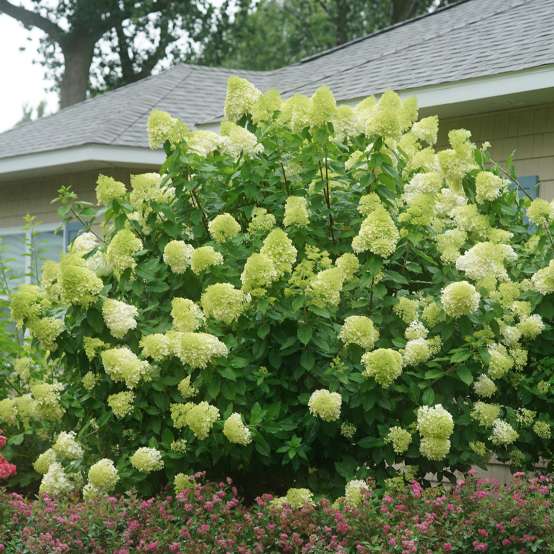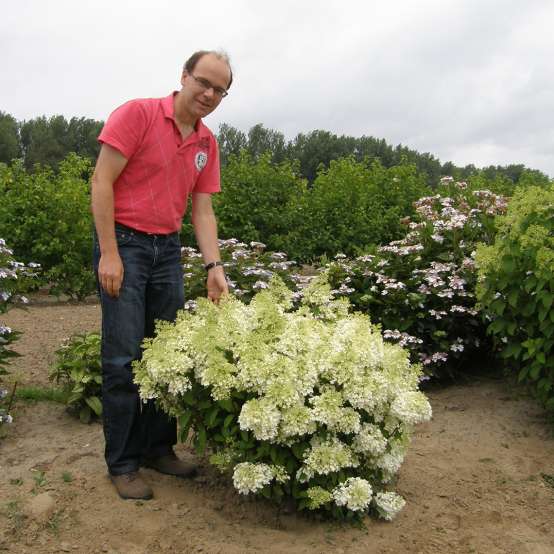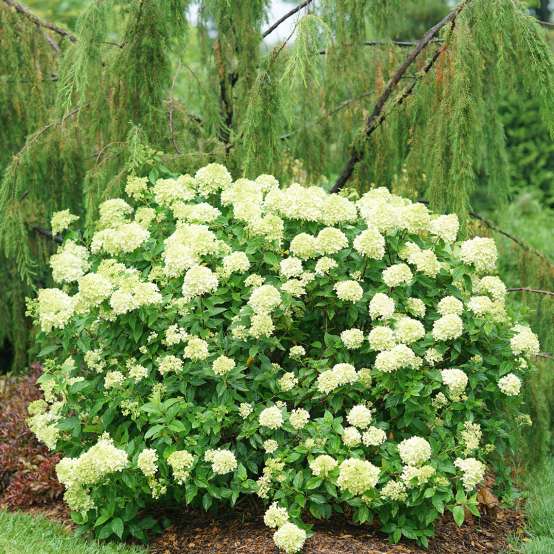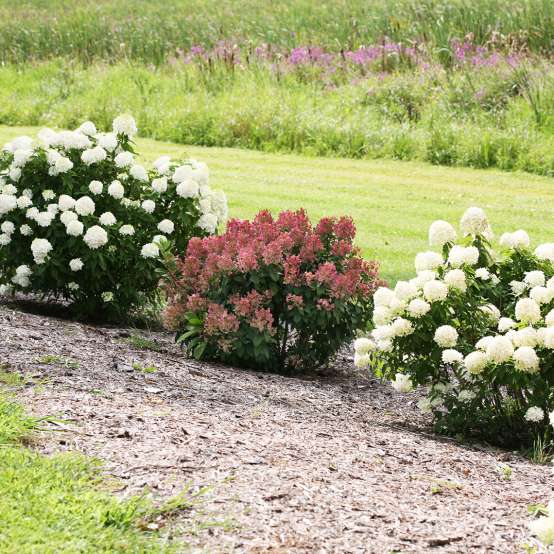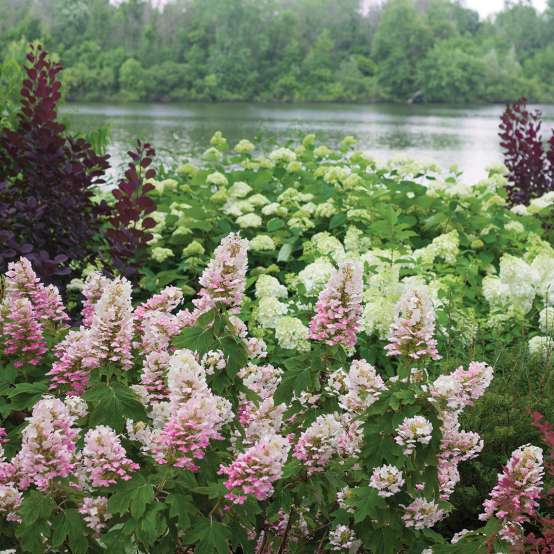Clicking the following controls will change the main image displayed above.
- Tag: Firelight® Hydrangea Tag
- Benchcard: Fire Light® Hydrangea Benchcard
- Grower Sheet: Spec Sheet: 2019 Shrubs of the Year Grower’s Guide
- Spec Sheet: Fire Light® Hydrangea Spec Sheet
- Plant of the Week: Plant of the Week April 29, 2021
- Plant of the Week: Plant of the Week January 17, 2019: Fire Light® Hydrangea
- Grower Sheet: Fire Light® Panicle Hydrangea

Meet the Breeder
Tim Wood
Grand Haven, MI, USA
FIRE LIGHT®

Hydrangea - Panicle
Hydrangea paniculata
'SMHPFL'
PP#25,135; CBR#5160
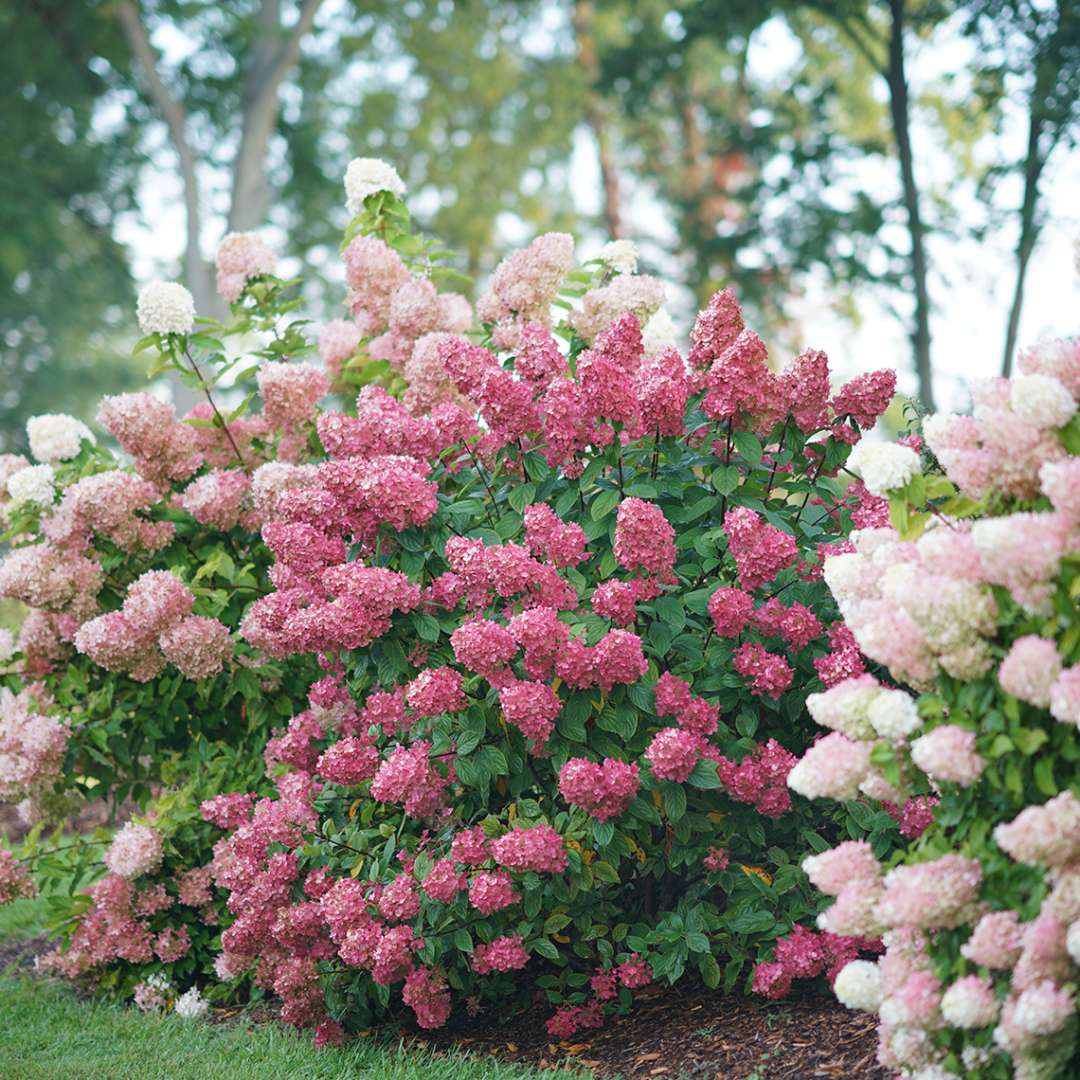
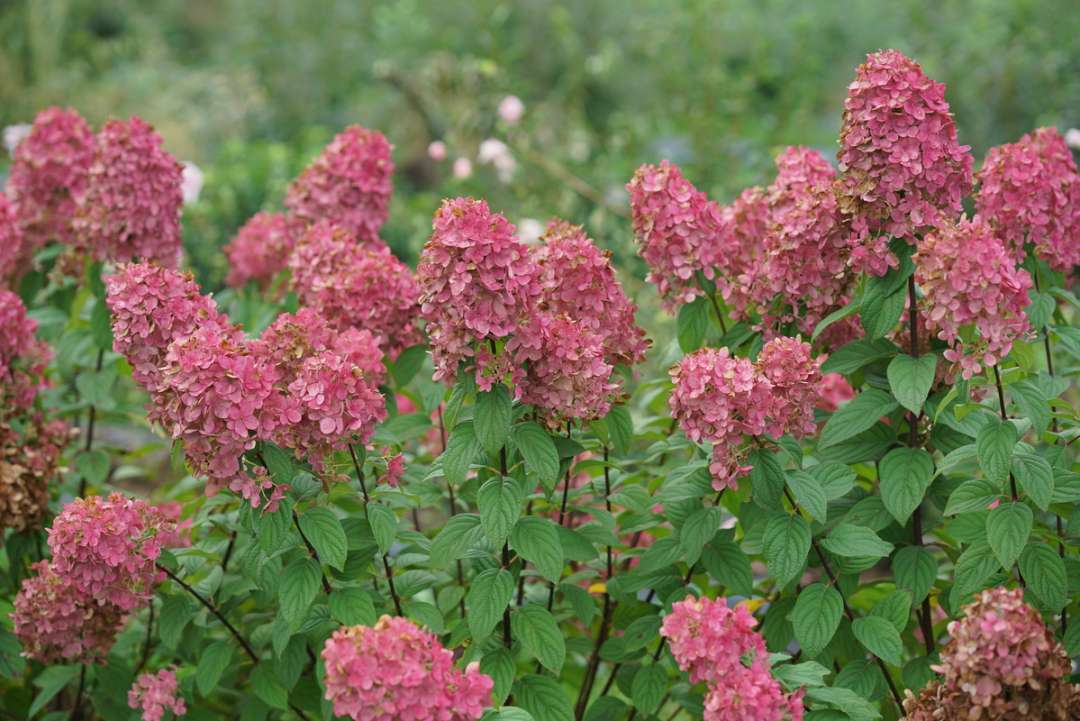
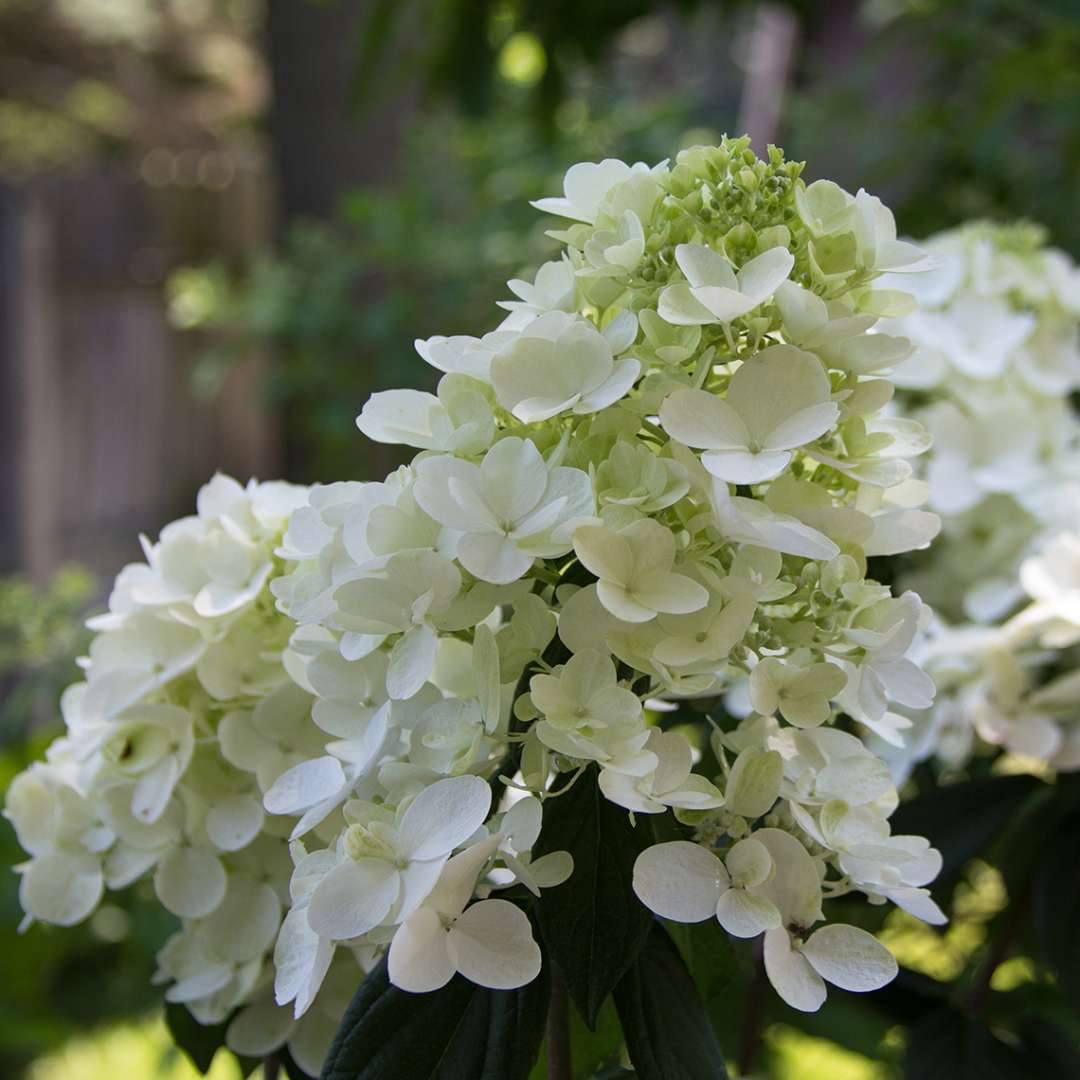
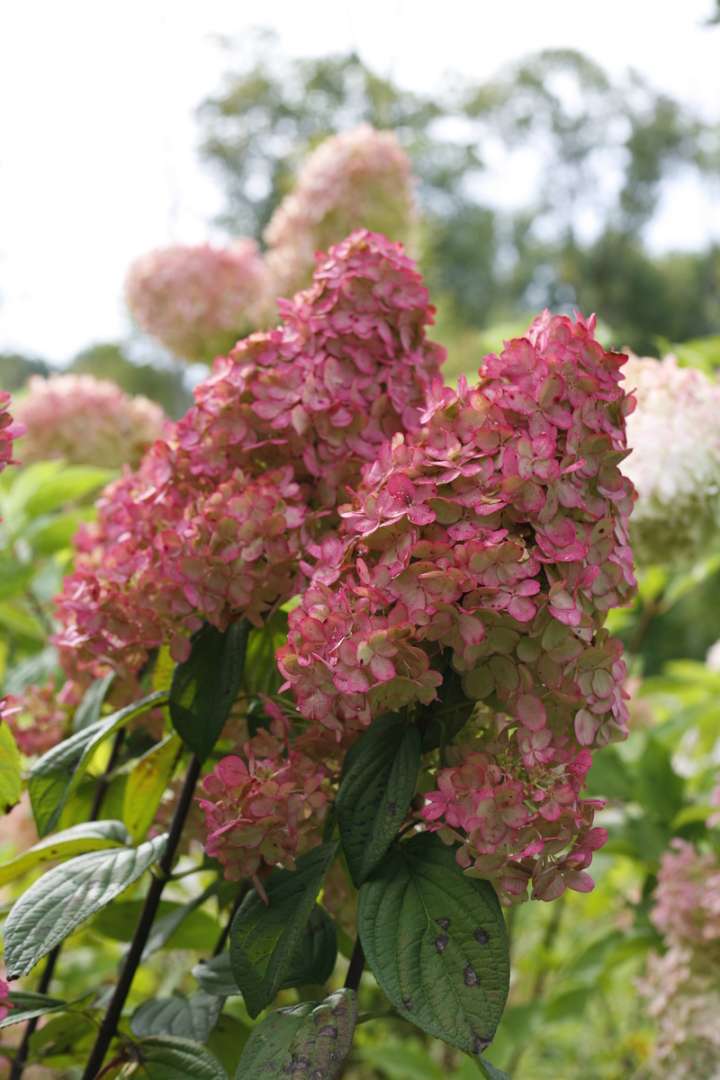
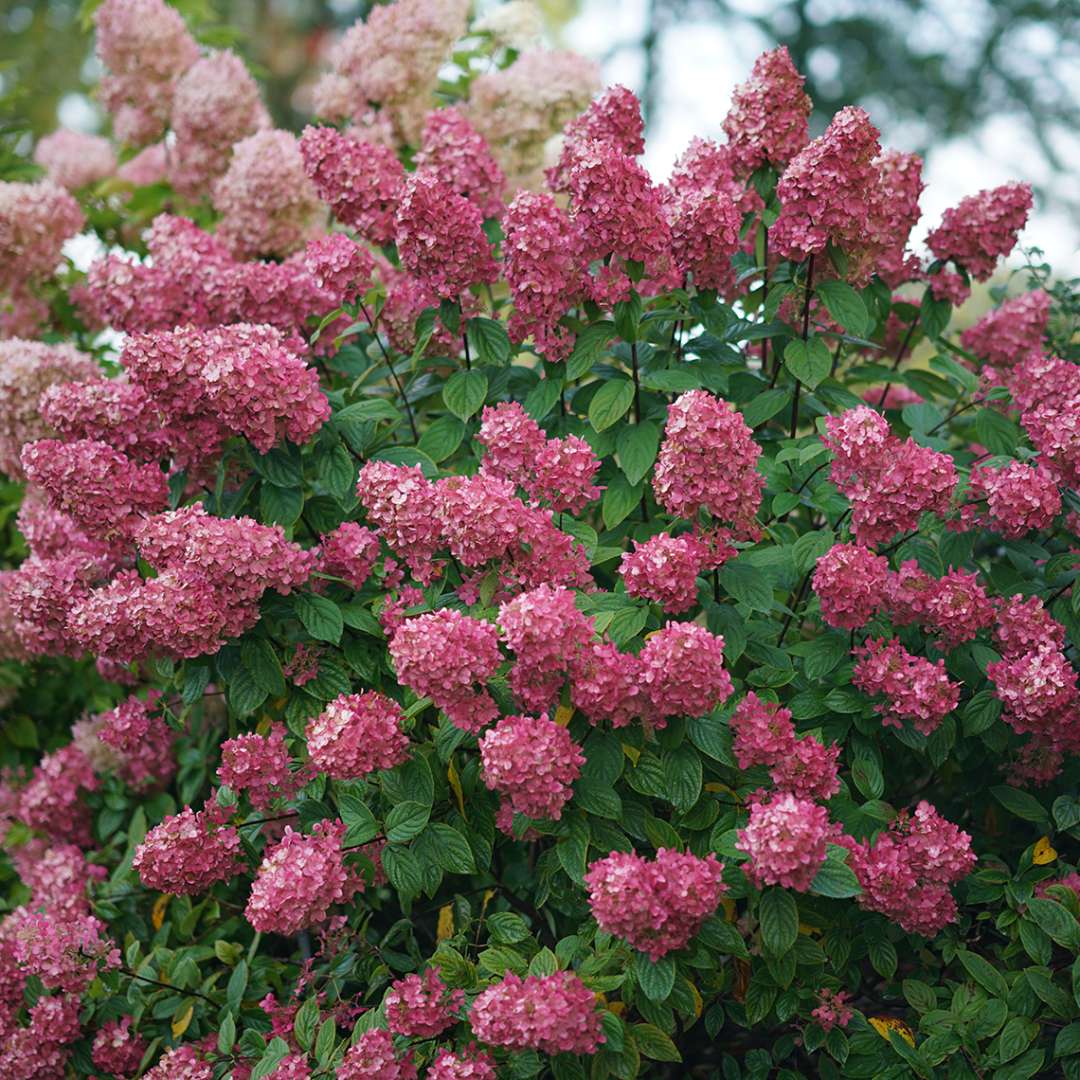

- Very strong stems
- Useful habit
- Floriferous
- Description
Fire Light® panicle hydrangea is the new standard for measuring all hardy hydrangeas. Upright panicles are packed with florets, which transform from pure white to rich pomegranate-pink. Its thick, sturdy stems hold up the big, beautiful flowers so they are prominently displayed in the garden. The large blooms are also an excellent addition to cut flower arrangements, both fresh and dried. Fire Light® Hydrangea paniculata is incredibly low maintenance and easy to grow, and its useful habit makes it a great choice for a specimen, hedge, or border.
Fire Light hydrangea was the 2019 Hydrangea of the Year.
- USDA Zone
- 3 - 8 (-40°F/-40°C)
- Exposure
- Full sun, Part sun
- Height
- 6 - 8'
- Width
- 6 - 8'
- Finish Time
- 1 season
- Type
- Deciduous
- Bloom Time
- Summer
- Flower Color
- White, Red
- Foliage Color
- Green
- Liner Sizes
- 2 1/4", 4", Quick Turn
General Care
Soil
Adaptable to most any soil except very wet or excessively alkaline soils.Pruning
In late winter or early spring, cut back by about one-third its total height, just above a set of large buds. This ensures that the growth for the season will come vigorous buds lower on the plant and also serves to remove any remaining dried blooms. Alternatively, cut back in autumn once the plant has gone completely dormant. May be cut back harder if desired, though this tends to produce stems that are unable to achieve maximum stem strength the following season.Uses
Specimen; mixed borders; mass plantings. Makes a good hedge or screen. Excellent for cut flowers, both fresh and dried.Growing Tips
Panicle hydrangeas are the most sun tolerant hydrangeas and are also resistant to wilting. In cooler climates, full sun is recommended for best stem strength and flower set. Flower color is unaffected by soil chemistry. If flowers turn brown and dry instead of aging to pink or red, this indicates that the plant needs more water or that nighttime temperatures are too high for the transition to occur.Features: Alkaline soil, Clay soil, Cut flower, Fall interest, Salt tolerant
Filters: Botanical genus: Hydrangea, Common name: Hydrangea - Panicle, Retail program: Proven Winners® ColorChoice®, USDA Zone 3, USDA Zone 4, USDA Zone 5, USDA Zone 6, USDA Zone 7, USDA Zone 8, Exposure: Full sun, Exposure: Part sun, Bloom time: Summer, White flowers, Red flowers, Green foliage
Features: Alkaline soil, Clay soil, Cut flower, Fall interest, Salt tolerant
Filters: Botanical genus: Hydrangea, Common name: Hydrangea - Panicle, Retail program: Proven Winners® ColorChoice®, USDA Zone 3, USDA Zone 4, USDA Zone 5, USDA Zone 6, USDA Zone 7, USDA Zone 8, Exposure: Full sun, Exposure: Part sun, Bloom time: Summer, White flowers, Red flowers, Green foliage

